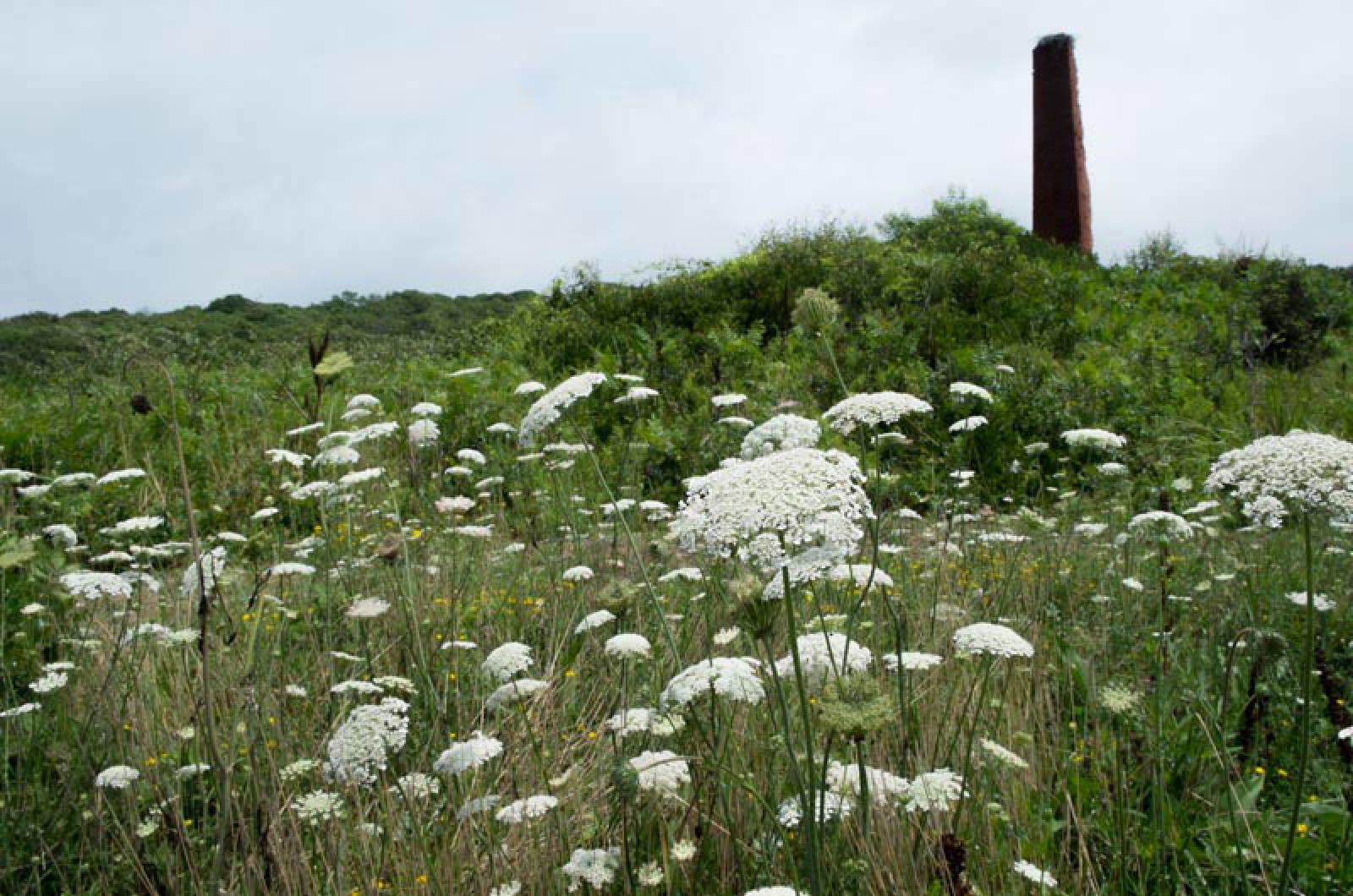From the July 15, 1927 edition of the Vineyard Gazette:
Of all the interesting and historical spots on Martha’s Vineyard, none is more picturesque and interesting than the Brickyard in Chilmark.
The Brickyard today gives the effect of a grim battle scene between nature and man, wherein the former is rapidly gaining the upper hand.
There is no sound to break the stillness save the murmur of the sea and the soft rushing of the brook, or possibly the call of bank swallows that nest in the tall sand and clay cliffs on the western side of the valley. That is the Brickyard proper.
At the end of the valley, almost concealed by a dense growth of trees and brush, so thick that it is almost impossible to penetrate, stands Manter’s grist mill, the last old fashioned mill operated on the Island.
Who first lived at the Brickyard or on Roaring Brook is something of a puzzle. Records are lacking in some instances, or perhaps never existed. Remains of several old foundations show that houses once stood on the hillsides, and one cellar, almost entirely covered with dense brush, is particularly ancient in appearance.
This much is known, however, that a grist mill was built on Roaring Brook by John Hillman before 1728 and whether or not it was operated by him, there is ample evidence that a part of this tract remained in possession of the Hillman family down to the date of Mrs. Rebecca Manter, better known as “Aunt Rebecca,” whose maiden name was Hillman. The present owner is her nephew, Alpheus Tilton.
In 1825 the grist mill was still in operation, and a newcomer, William Mitchell, lived nearby on a tract he had purchased. The ancient cellar hole mentioned is probably the site of Mitchell’s house.
The next activity in the vicinity was the rebuilding of the grist mill in 1849 by Francis Nye, who also built the paint mill on Howland’s Brook.
In 1851, according to Banks’ history, Charles Smith and John Barrows built the first real brick making plant on what is now the site of the “lower yard.” It was an extensive industry for the time and place, employing about a dozen laborers and earning, as Dr. Banks says, about $2400 yearly. The first old boarding house was erected by this firm and the first water wheel installed for running the mixer. The firm continued in business for twenty years or thereabouts.
It appears that the condition of the business must have been poor when it was purchased by the Hon. Nathaniel Harris of Brookline in 1869.
The new management had made great improvement to the land. They had added the “upper yard,” built a second boarding house and numerous smaller buildings, also erected the tall brick stack which still stands, partly for the steam plant, and also to carry off the smoke from the kilns. Water power was still used to run certain portions of the plant and the great wheel, previously mentioned, turned busily day after day.
But at length, after years of operation, the plant was closed down, never to be reopened.
Thirty years ago or longer, the late Sydney Harris and his brother Charles, started the China Clay Company, and the old brickyard was once more the scene of lively activity. As experimental plant was installed on the old yard and the future looked bright for the new industry, but after a very few years, that too was abandoned.
As for the grist mill, that continued to be occupied by “Aunt” Rebecca Manter and her husband, “Uncle” Billy the miller.
Calmly attending to their own affairs, they had watched the hustling people come and go, come the second time, and then leave for good. From the upper windows of the old mill where the couple lived, they could look down the valley and across the sound, a beautiful view at all times.
Uncle Billy grew too feeble to run the mill and the canal filled little by little, while the wooden trough which carried water to the wheel slowly decayed. At length, he passed on, and Aunt Rebecca was left alone in the mill, and alone she stayed for years after his death, a bright energetic old lady who never neglected to set a lighted lamp in her seaward window at night during the more than half century that she lived there.
For Aunt Rebecca has long since gone to join Uncle Billy and only a part of the window and the peak of the gable end of the mill is visible above the trees which have grown up to hide the mill.
Truly the Brickyard is a scene of desolation and decay. There is the evidence of mighty toil and lavish expenditure of capital. There are the signs of long years of human occupancy, but the signs are growing dim.
Some day the old stack will fall and the bricks will settle out of sight in the ground. The waterfront will crumble in time, the mill disappear, and nothing will be left to show what an industry once flourished there but the great vein of clay which juts from the face of the cliff, and perhaps the fragments of the sea wall.
Compiled by Hilary Wall
library@mvgazette.com







Comments (1)
Comments
Comment policy »